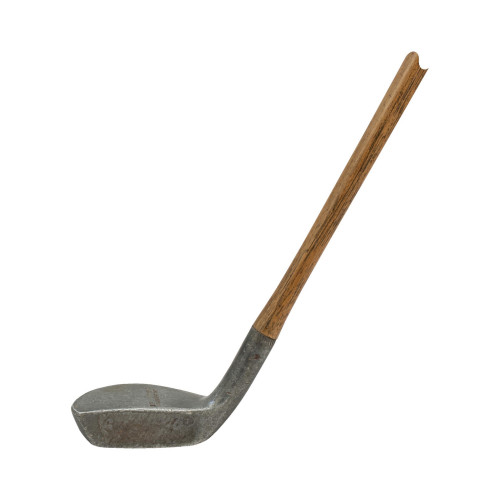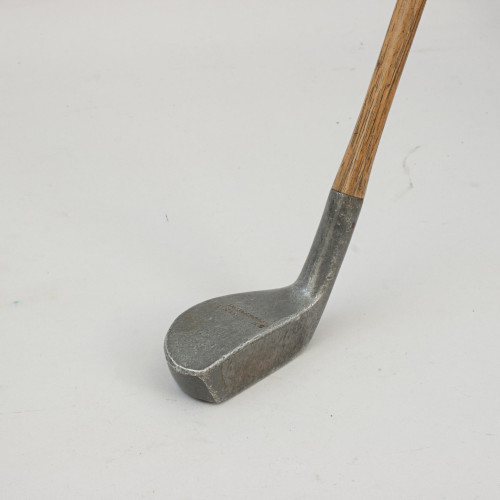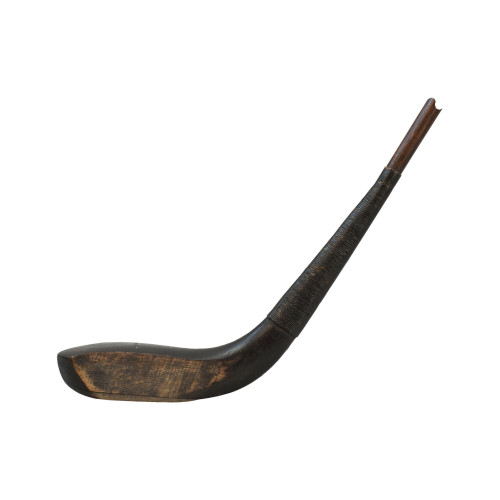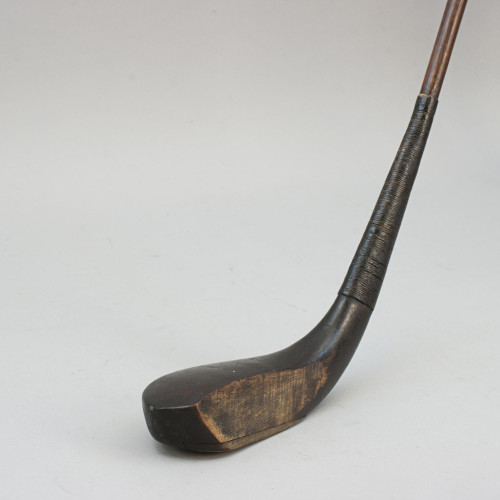Collection Of Antique Colf Club Heads
Collection Of Antique Colf Club Heads
28984
Collection Of Antique Colf Club Heads.
A rare collection of 16th, 17th century lead Colf club heads from the Netherlands with various ceramic moulds and a reference book by Steven J. H. van Hengel titled "Early Golf". Although not associated with golf, it is thought that the origins of golf may have derived from Colf.
Colf, not to be confused with Kolf, was the ancient long game and at least looked very similar to golf, kolf was the relatively new short game, 18th century. Colf was a stick and ball game in which a ball was hit with a curbed stick, later a wooden shaft with a metal face, with the aim of reaching a target in the fewest possible strokes. Not very different from the games of crosse (choule) and mail (pall mall). The game came into being in the Low Countries around the end of the 13th century and the beginning of the 14th century. At the end of the 17th century and the beginning of the 18th century, for several reasons, the game ceased to exist. Colf was played in the streets and churchyards in the towns and later the roads, tracks and the open acres and fields in the ramparts outside the city walls, moving also to the frozen canals, rivers and lakes during the Little Ice Age (16th and 17th century). The game was played over longer distances. Because the game was played in winter, these 'playing fields' were often very muddy or hard frozen and so hardly passable.
At some time during the Middle Ages, the Colf craze seems to have travelled across the North Sea to the Netherlands' neighbouring trading partner, Scotland. While the Scots rightly claim to have invented the modern game of golf, the origins of the game that was to become golf were brought to Scotland by Scots merchants who had traded in the Low Countries. The game was brought to St Andrews from Hanseatic ports where Colf was commonly played at the time. The Dutch sport was adapted to local conditions whereby it came to be played on what were termed 'links' (coastal sandy grasslands). The term has since become almost synonymous with the modern golf course. Oddly, while Scotland was developing its own interpretation of Colf as a spacious outdoor game, which would eventually morph into the modern game of golf, the Dutch were doing exactly the opposite, instead of playing in the open, more and more were adapting the game to a form that could be played on the old maliespel courses, which mostly adjoined taverns and inns. Increasingly, the courses were roofed over until finally, the new game was entirely played indoors. Thus was born the unique Dutch game of Kolf.
Kolf was played using initially the old colf clubs and balls and played on a kind of mini-jeu de mail alley. Colf became Kolf, a shorter game, more target oriented than distance oriented. The ball was kept low, or even rolling, when pushing towards the target. The target itself changed from a tree, a door or a hole towards a wooden post in the ground. The posts were not the final target of the game. The ball was hit against the post and from there it ricocheted into small marked fields behind the post with different point values.
FROM COLF TO KOLF, The same word, a world of difference by Geert & Sara Nijs was used in the research of these club heads as was Wikipedia.
1600-1649
Circa 16th, 17th century
Lead
Netherlands
David Easby
Thank you for your enquiry.
We will get back to you soon.
Please create wishlist to add this item to
RELATED ITEMS




























